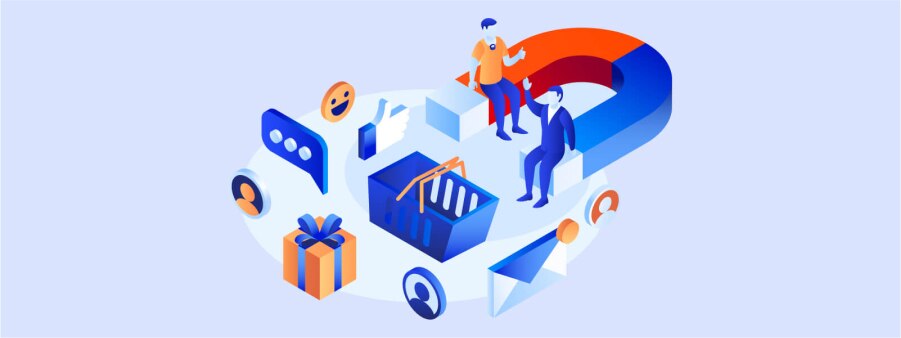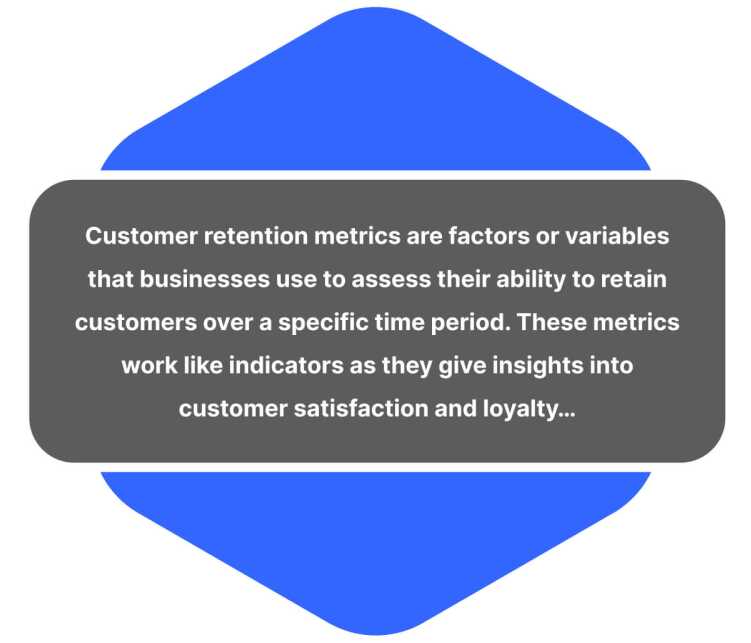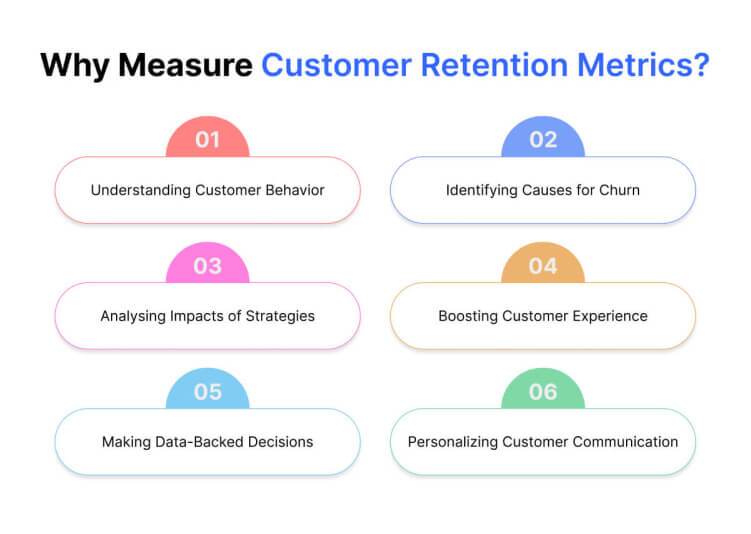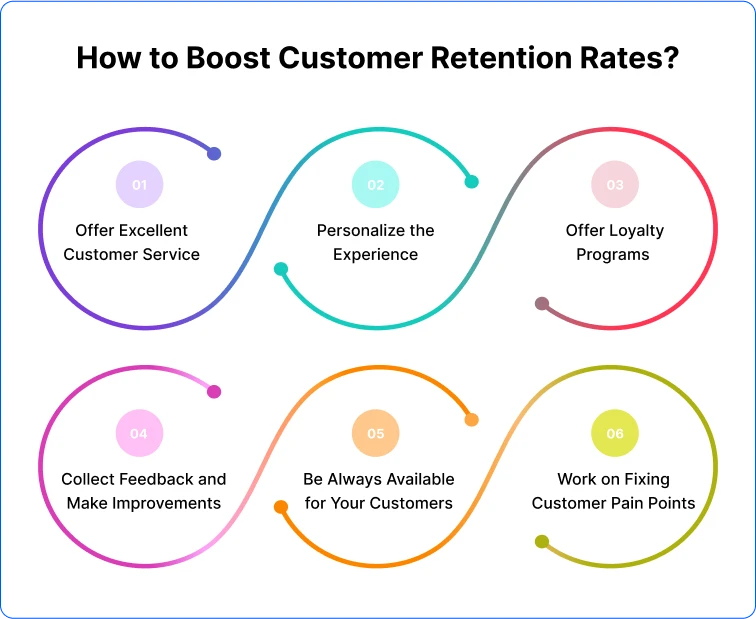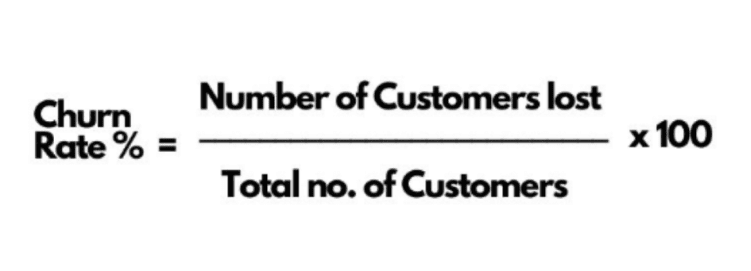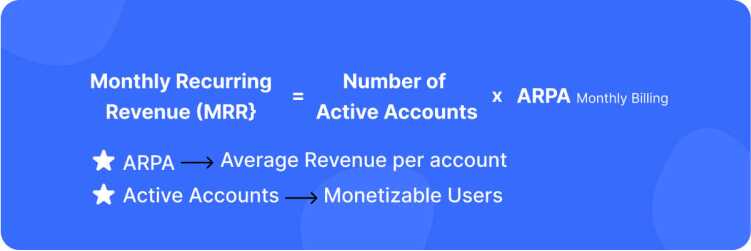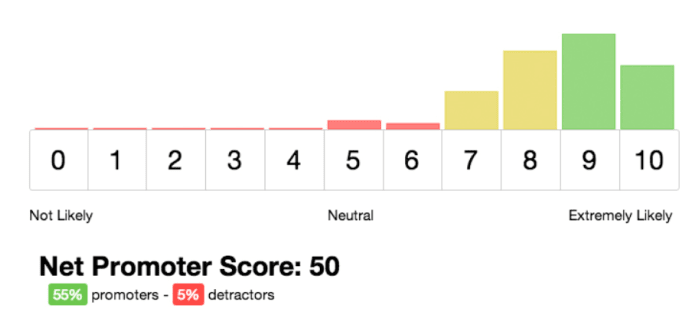Retaining your existing customers is a lot cheaper than attracting new ones. This makes it necessary to focus more energy on the customers you already have than you don’t. It’s equally important to work on reducing the churn rate and stop your customers from leaving. Tracking popular customer retention metrics can help you gain insights into how happy your customers are.
It would, however, be a mistake if you focus less on retention and more on acquisition. It might lead to a high rate of churn – a serious issue faced by many SaaS companies today. If your company is also churning users, make sure you regularly measure and analyze the retention metrics. This will help you know who is churning, why is churning, and when.
In this post, we will explore SaaS customer retention metrics in detail, understand the definitions and types, learn why to measure these metrics, and also look at the importance of using these metrics.
But first, let’s get started with understanding the definition of customer retention metrics –
What are Customer Retention Metrics?
Customer retention metrics are factors or variables that businesses use to assess their ability to retain customers over a specific time period. These metrics work like indicators as they give insights into customer satisfaction and loyalty levels, and also inform about the engagement level of customers with a company’s products or services.
By using metrics of customer retention, a business can measure the chances of retaining customers, and also determine the overall performance of the operations in a specific time frame. More companies now use these metrics as they realize how retaining customers is more beneficial than acquiring new ones.
When a business regularly tracks and analyzes these metrics, it stands better to understand the behaviors and preferences of its customers, minimize the churn rate, and boost overall satisfaction. All this is essential for improving customer retention and long-term profitability. Plus, a five percent increase in customer retention can boost profits by up to 75%.
Why Measure Customer Retention Metrics?
Customer retention metrics offer a detailed view of your business’s relationship with its customers. Measuring them can empower your business to make informed decisions and tailor strategies to forge lasting customer relationships. Sadly, only 18% of customers focus on customer retention.
There are many reasons why you should measure these metrics –
- Understanding Customer Behavior – Retention metrics offer a comprehensive peek into how customers interact with your products or services. The data can help you understand customer pain points and behavior better.
- Identifying Causes for Churn – Tracking and measuring retention metrics can offer you all the factors and causes behind customer churn. You will know all the factors responsible for the churn and then take the right steps to reduce churn.
- Analyzing Impacts of Strategies – Retention rates often depend on a number of different factors and knowing them all is the first step towards minimizing churn. When you measure the retention metrics, you will basically analyze the impacts of various strategies on keeping customers with the business.
- Boosting Customer Experience – Customers are more likely to stay loyal when they have a good experience which is not possible unless a business understands their needs and meets their expectations. Measuring retention metrics can prove valuable in understanding customers and enhancing their overall experience with your brand.
- Making Data-Backed Decisions – Measuring customer retention metrics provides you with tons of customer-related data that can be used to validate business decisions. The data can let you understand whether your marketing spend is right, whether the budget is being allocated aptly whether pricing strategies are standard, and so on.
- Personalizing Customer Communication – A business that measures retention metrics can do an effective customer needs assessment, so better understands customers, their needs, and behaviors. So, it can tailor messages and personalize communication to address specific segments. This will boost the rate of engagement and loyalty.
How to Boost Customer Retention Rates?
Customer retention is vital for the growth of a business. The more you retain customers, the better impact it will have on your brand value, sales, and revenue. There are some useful strategies you can use and drive retention rates.
Here are key tips to boost customer retention rates –
- Offer Excellent Customer Service – Happy customers stick more and buy more. To boost customer happiness, you need to offer excellent support and quick replies to their queries. You need to ensure a positive experience at every touchpoint if you want to improve customer satisfaction with your business.
- Personalize the Experience – Customers love personalized experiences. If you can personalize customer experiences, it will help you forge a deeper connection with them and you can increase their loyalty to your brand. Using customer data and insights is key to personalizing your offers to the specific needs of the customer.
- Offer Loyalty Programs – Implementing a well-planned loyalty program is key to rewarding customers for repeat purchases and engagement they do with your brand. You can consider offering incentives such as reward points, exclusive offers, or discounts to show how much you value their loyalty to your business.
- Collect Feedback and Make Improvements – You should regularly collect feedback if you want to identify areas for improvements and improve the customer experience. You can gather feedback through surveys, and may also rely on reviews to make needful changes to your retention strategies.
- Be Always Available for Your Customers – When you are always available for your customers, you win their trust and confidence. You also win their faith by staying consistent across channels and maintaining uniformity in your messaging and communication across all channels.
- Work on Fixing Customer Pain Points – It’s important to understand your customer’s needs, preferences, and pain points so that you can fix any problem they may face. Together with offering great support, ensure you hear their issues immediately and resolve them quickly.
A Step-By-Step Guide on How to Measure Customer Retention
Measuring customer retention is essential to understanding and managing the churn rate. It’s also vital to devise strategies for achieving customer happiness. When you regularly measure customer retention, you get valuable insights into the strength of your customer relationships and identify areas of improvement.
Let’s look at how to measure customer retention –
Step 1. Set Clear Objectives – Before you measure customer retention, you need to set clear objectives for doing that. You need to know how it will align with your business goals. Whether you want to reduce the churn rate or increase repeat purchases, you need to know, and lay out, the reason for measuring customer retention.
Step 2. Select Relevant Metrics – There are many metrics you can rely on when it comes to measuring customer retention. The Key is to choose the ones that suit your business contexts well. From churn rate to average customer lifespan, customer retention rate to CLV, you can choose the metrics that resonate well with your business goals.
Step 3. Segment Your Customer Base – Since your business has different customer segments, analyzing retention rates for them separately can give deep insights into the broader factors affecting retention. That’s why you first need to consider segmentation of your customers based on key parameters such as demographics, engagement levels, or purchasing patterns.
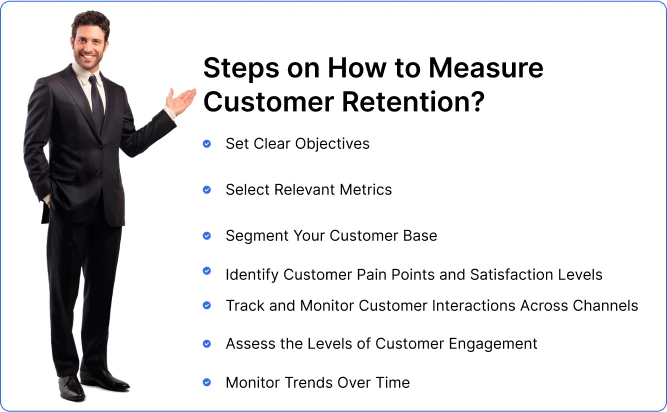
Step 4. Identify Customer Pain Points and Satisfaction Levels – When you plan to measure customer retention, the priority should be on identifying customer needs, pain points, and satisfaction levels. These factors will give detailed insights into reasons for churn. So, you must consider implementing surveys and collecting feedback regularly.
Step 5. Track and Monitor Customer Interactions Across Channels – A deep understanding of how customers engage and interact with your brand across channels can help you know their levels of satisfaction. Make sure you monitor customer interactions across touchpoints and channels to analyze their behavior and find areas for improving retention.
Step 6. Assess the Levels of Customer Engagement – The more your customers are engaged with your brand, the higher levels of retention rates you can expect. Customers’ levels of engagement are a good indicator of understanding their likelihood of churn or retention. That’s why you need to measure their engagement such as website visits, email response rates, app usage, etc.
Step 7. Monitor Trends Over Time – How would you know whether or not your retention rate is satisfactory? There are two ways – first, you need to compare your rates against the industry benchmarks, and second, you need to compare it against your competitors. After that, you need to monitor retention metrics over time to see the trends if any, and implement strategies.
Popular SaaS Customer Retention Metrics
A result-driven customer retention solution is vital to business growth. The more you retain your customers, the better it will reflect on the overall health of your business. However, you need regular customer retention analysis to track and measure some key metrics and see if all your strategies are doing fine.
Here are the popular customer retention metrics you should be tracking and measuring over some time –
1 Customer Retention Rate (CRR)
CRR is a popular metric that measures the percentage of customers retained by a business over a specific period. It’s calculated either on a monthly or yearly basis. This metric not only helps in knowing the rate of retention but also gives an insight into the success of customer retention strategies.
Customer Retention Rate = (End number of customers – New customers gained) / Starting number of customers) x 100
How to Calculate Customer Retention Rate?
- First of all, decide on the time period for which you want to calculate the retention rate.
- Count the customers at the start and at the end of the chosen time period.
- Determine the number of new customers you acquired during the period.
- Put the values into the formula and get the CRR as a percentage.
2. Customer Churn Rate
The Churn rate is another useful metric to measure the rate at which customers stop doing business with you. Since a certain percentage of customers leave at some stage, this metric proves beneficial in understanding the rate of such departures.
Measuring the churn rate implies that you calculate customers your business could not retain. After all, some customers may opt out of the subscription at their own volition.
Maintaining a low churn rate is also desirable for a business and when the churn rate is higher than the standards, it’s time to analyze the factors that are forcing customers to move out.
Customer Churn Rate = (Number of customers who left / Total number of customers at start of period) x 100
How to Calculate Churn Rate?
- Specify a timeframe for which you want to calculate the churn rate
- Calculate the total customers at the start and customers who left during the specified period
- Divide the customers who left by the total number of customers at the start, and then multiply by 100
3. Monthly Recurring Revenue (MRR)
Monthly Recurring Revenue (MRR) is a key retention metric to track and predict revenue streams. SaaS companies use this metric to predict the stable revenue they generate from ongoing subscriptions or recurring billings.
Measuring MRR helps in calculating the total revenues that a company can expect on a monthly basis from its active subscribers. This metric is important to understand customer retention rates better and analyze the financial health of the business on a monthly basis.
The use of MRR is also beneficial for tracking the effectiveness of sales and marketing efforts. More importantly, a business can predict future revenue and do apt resource allocation based on measuring MRR.
Monthly Recurring Revenue (MRR) = Average Revenue Per Account x Total Accounts in a Month
How to Calculate MRR?
- Determine the average revenue per account (ARPU)
- Consider only the active account
- Multiply ARPU by the total number of active users
4. Customer Lifetime Value (CLTV)
It’s a key metric that helps businesses know the total revenue a customer will generate over the entire duration. It also represents the total net profit generated from customers throughout their entire stay. While calculating CLTV, it’s important to consider all key details such as the initial purchase, repeat purchases, and the total duration that customers have with the business.
Measuring customer lifetime value also proves beneficial in analyzing the level of customer loyalty. When CLTV is higher, it shows customers continue to purchase over and again and it reflects that everything your business is doing is adding value to customers. In fact, the higher a customer’s lifetime value, the less a business has to spend on acquiring customers.
Customer Lifetime Value = Average Order Value x Average Number of Purchases x Average Customer Lifespan
How to Calculate CLTV?
- Determine the average amount spent by a customer per transaction.
- Calculate how often the customer makes purchases on average
- Consider the average lifespan of customers in your business
5. Repeat Purchase Ratio
The repeat purchase ratio (RPR) is a vital customer retention metric that is used to calculate the rate at which customers return to make another purchase. This metric is a good indicator of customer loyalty and can also be a great evaluator of the effectiveness of a company’s retention strategies. Using this metric, a business can know the frequency of repeat purchases of their products or subscriptions.
Repeat Purchase Ratio = Number of Returning Customers / Number of Total Customers
How to Calculate RPR?
- This metric can be calculated either weekly, monthly, or quarterly, depending on the specific needs of the business
- Now when the timeframe is decided, count the number of customers with at least one purchase
- Calculate the number of customers with repeat purchase
- Put the value into the formula and you will get the ratio
6. Product Return Rate
This metric is used to measure the rate at which your products are returned by customers. The purpose of using this metric is to know the percentage of sold units returned to the business. For a business, the ultimate aim should be to keep the return rate as low as possible – preferably zero – but some proportion of returns are inevitable and they can’t be wished away.
Businesses that have a high rate of return should understand that there is something faulty with their customer retention strategy. In fact, marketing and customer service teams in B2B businesses should get their acts together to minimize the product return ratio else it can be problematic for the business.
Product Return Rate = Number of Units Returned / Total Number of Units Sold
How to Calculate Product Return Rate?
- Choose a specific timeframe for which you want to calculate the return rate
Count the total number of units sold during the period - Count the total number of sold units returned
- Now put the numbers in the formula and get the return rate
7. Net Promoter Score (NPS)
The NPS is a widely used metric to measure customer loyalty and satisfaction with a company’s products or services. It is used to gauge the overall happiness level of customers with your brand and whether this happiness can be the reason those customers promote your brand to others.
Measuring the net promoter score is also a simple way for the business to understand how likely their customers are to recommend the products and services or business to others. In this metric, a simple survey is used where customers’ response is rated on a scale of 0 to 10.
Based on the responses, customers are categorized into Detractors, Passives, and Promoters. These classifications give a good idea of which groups of customers are more likely to promote or recommend the products to others.
NPS = Percentage of Promoters – Percentage of Detractors
How to Calculate NPS?
- Calculate the number of promoters
- Count the number of detractors
- Subtract the percentage of detractors from promoters
8. Customer Satisfaction Score (CSAT)
The CSAT is one of the most widely used metrics for measuring the level of satisfaction that customers have with a business or its product or service. This metric is used by many companies to gauge the overall satisfaction level of customers. To measure the CSAT, a survey or feedback form is used that helps in understanding how well a business is meeting customer expectations.
In the survey, the question that is asked is, “How satisfied are you with the product or /service or experience provided by the company]?” The response is generally categorized as “Very Satisfied”, “Satisfied”, “Neutral”, “Unsatisfied” and “Very Unsatisfied”. Based on the responses to the CSAT survey, a business can easily understand the level of customer satisfaction and then know the areas for improvement.
CSAT Score = (Number of Satisfied Respondents / Total Number of Respondents) × 100
How to Calculate the CSAT?
- Count the total number of respondents
- Count the respondents who said they are “Very Satisfied” or “Satisfied”
- Divide the number of respondents who are Satisfied by the total number of responders
- Multiply it by 100 to get the score
9. Loyal Customer Rate
As the name suggests, it refers to the number of customers who make a repeat purchase within a specific time range. This metric is very helpful for understanding and identifying the percentage of customers who show the most loyalty through purchases. When you calculate this rate, you get an idea of the most valuable buyers in your customer base.
Loyal Customer Rate = Number of Repeat Customers / Total
How to Calculate Loyal Customer Rate?
- First of all, determine the number of loyal customers your business has
- Determine the time range for which you want to calculate the loyal customer rate
- Count the number of loyal customers for the time range you have chosen
- Count the total number of customers who purchased during that time range
- Now, divide the total loyal customers by the total number of customers
10. Average Revenue Per User (ARPU)
For subscription-based business, it’s important to know the average revenue generated by each user over a specific period. If your business is also in a service-oriented industry, you need to measure the Average Revenue Per User (ARPU) metric regularly. It will help you know the average value that each customer adds to your overall revenue stream.
ARPU = Total Revenue / Number of Users or Customers
How to Calculate ARPU?
- Choose the time range for which you want to calculate ARPU
- Calculate the total revenue generated by your business for that time range
- Determine the total active users or customers for the mentioned time rate
- Now divide the total revenue by the number of customers and you will get the ARPU
Boost Customer Retention and Drive More Engagement with REVE Chat
Engagement is the first step towards winning your customers and retaining them. The more you engage your customers, the more chances you have of retaining them.
With REVE Chat, you find a variety of engagement tools that can help you in retaining your customers. Our AI-powered chatbot can prove handy in automating various tasks across marketing, sales, and support.
You can use co-browsing and video chat software to add a new dimension to visual engagement. Our advanced live chat software can be paired with the chatbot to provide hybrid support where humans can handle complex queries while bots will handle routine questions.
Final Thoughts
There are many metrics to measure customer retention and you can choose the one that best serves your industry.
At, REVE Chat, we can help you boost customer engagement which can prove valuable in terms of enhancing retention.
You can sign up with us and check how our products can add value to the way you engage and retain your customers.
